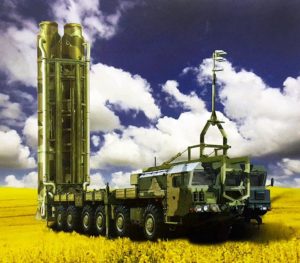
Anonymous U.S. intelligence officials have told American news outlet CNBC that Russia tested its PL-19 Nudol anti-satellite (ASAT) direct-ascent missile on 23 December 2018, making it the seventh test of the system if the U.S. claims are true. The PL-19 Nudol flew for a total of 17 minutes over a distance of nearly 3,000 kilometres before splashing down at an unidentified location, the U.S. intelligence officials said.
The PL-19 Nudol is believed to be a direct-ascent ASAT missile that can be launched from a mobile launcher in order to target enemy Earth observation and communications satellites in low-Earth orbit (LEO).
The claim by U.S. intelligence officials comes days after President Donald J. Trump unveiled his administration’s 2019 Missile Defense Review that cites direct-ascent ASAT missiles such as the Russian PL-19 Nudol missile as a threat that justifies increased U.S. missile defences.
“…Russia is developing a diverse suite of ASAT capabilities, including ground-launched missiles and directed-energy weapons, and continues to launch “experimental” satellites that conduct sophisticated on-orbit activities to advance counterspace capabilities,” the U.S. 2019 Missile Defense Review says.
Similarly, a December 2018 publicly released report by the U.S. National Air and Space Intelligence Center (NASIC), titled “Competing in Space,” outlines the U.S. perspective on what is seen as a growing threat environment in space, with China and Russia developing a range of counterspace and anti-satellite weapons and capabilities that threaten U.S. and allied commercial and military satellites.
“Both China and Russia are developing new space capabilities to achieve military goals and reduce their reliance on U.S. space systems. Through military reforms, China and Russia have organized new military forces devoted to the employment of space and counterspace capabilities and regularly integrate them into military exercises. Meanwhile, these countries continue to develop, test, and proliferate sophisticated anti-satellite weapons to hold U.S. and allied space assets at risk,” the NASIC report says.
The Nudol has a lot in common with Russian midcourse ballistic missile defence systems, but U.S. intelligence has maintained the assessment for some time that the Nudol variant is in fact a dedicated mobile ground-based kinetic-kill ASAT interceptor.
If true, the reported test is the latest development in what a large number of space security experts around the world believe to be a growing space arms competition among the major powers, in particular the United States, Russia, and China.
Russian and Chinese officials have expressed similar concerns about the weaponisation of space given discussions in Washington, DC, about building a space-based missile defence capability that could not only destroy (in theory at least) ballistic missiles in the boost phase, but could also be plausibly used to target Russian and Chinese satellites in orbit.
 SpaceWatch.Global An independent perspective on space
SpaceWatch.Global An independent perspective on space




